Warlocks are magic users specializing in Shadow and Fire spells. Warlocks are what could be considered the “evil” spell caster of the Warcraft world. They can draw power straight from the souls of their opponents. Their offensive magic divides into two main paths – Affliction, which based around curses and spells that put the enemy into a slow agony and Destruction, which revolves around powerful, direct damage spells.
But probably the most iconic magic Warlocks might use is Demonology. It’s used to summon powerful demons and bind them to the Warlock’s command. They can summon a variety of demonic entities – Imp, Succubus, Voidwalker, Felhunter, and Felguard. Each one of them has different strengths and weaknesses, so only Warlock masters will know how to properly use them. On top of that, Warlocks can summon more powerful demons for shorter periods of time if the situation is really dire – an Infernal that deals massive area damage and a Doomguard, which excels at the single target combat.
In Hearthstone, Warlock class is represented by Gul’dan. Players can also unlock an alternative, cosmetic Shaman Hero – Nemsy Necrofizzle.
Themes and Mechanics
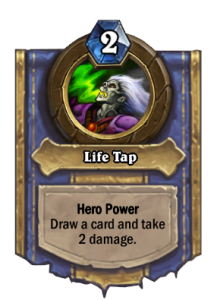 Warlock’s Hero Power is Life Tap. After using it, the Warlock takes 2 damage and draws a card. Depending on the matchup, it might be the strongest Hero Power in the entire game though new players tend to dismiss it very easily. After all, dealing damage to oneself is not something you normally want to do. But that’s one of the ongoing themes in Warlock – they sacrifice health in order to gain other advantages. In this case, card advantage. There are matchups where your health total doesn’t matter and when playing against such decks (like Control Priest or Control Paladin), Life Tap is simply a free source of card draw. Since Warlocks have built-in card draw, they also don’t have to worry about playing more cards that draw and can focus on the actual theme of their deck more.
Warlock’s Hero Power is Life Tap. After using it, the Warlock takes 2 damage and draws a card. Depending on the matchup, it might be the strongest Hero Power in the entire game though new players tend to dismiss it very easily. After all, dealing damage to oneself is not something you normally want to do. But that’s one of the ongoing themes in Warlock – they sacrifice health in order to gain other advantages. In this case, card advantage. There are matchups where your health total doesn’t matter and when playing against such decks (like Control Priest or Control Paladin), Life Tap is simply a free source of card draw. Since Warlocks have built-in card draw, they also don’t have to worry about playing more cards that draw and can focus on the actual theme of their deck more.
The most iconic Warlock’s mechanic is sacrificing one resource in order to gain other advantages. A lot of the Warlock cards have higher stats or more powerful effects but also come with a natural disadvantage. Sacrificing your own health is most common – Life Tap already does that. But there are many more cards that sacrifice health to gain something else. Bloodbloom and Cho'Gall trade health for mana, Flame Imp, Wrathguard and Pit Lord trade health for minion stats, while Chittering Tunneler trades health for card advantage (similarly to the Hero Power). Other resources Warlocks can trade is mana, although this one is far more questionable. Destroying a mana crystal needs to come with a great advantage to even be considered. That’s why Blastcrystal Potion has seen quite a lot of play (because destroying a minion is a very powerful effect in a class with weak single target removal), but neither Felguard, nor Demonfuse (destroying own mana is very similar to giving the enemy more) were ever played. Warlocks can even sacrifice their own minions to gain some advantages (Power Overwhelming, Void Terror, Shadowflame, Unwilling Sacrifice, Ravenous Pterrordax).
Learn more about Warlock in World of Warcraft via Wowhead’s class guides: Affliction Warlock Guide, Demonology Warlock Guide, or the Destruction Warlock Guide!
Kobolds & Catacombs expansion have taken the self-damage theme even further, introducing more ways to do so (Kobold Librarian, Vulgar Homunculus) as well as a card that benefits from you doing exactly that – Lesser Amethyst Spellstone. Upgrading it to third level gives you an insane 7 damage + 7 healing for just 4 mana,.
On top of all of those, another way Warlock can gain some sort of advantage over the opponent is the Discard mechanic. While it’s not entirely tied to the Warlock class (Deathwing and Astral Communion are other cards that feature the discard mechanic), it’s the only class that can actually utilize it. Not only are the Warlock Discard cards are powerful (Soulfire, Doomguard, Darkshire Librarian, Lakkari Felhound), but the class has some countermeasures against the negative effect. Malchezaar's Imp lets Warlock draw for every card it discards, while Silverware Golem, Fist of Jaraxxus and Clutchmother Zavas are great discard targets because discarding them results in a positive outcome. Even the Warlock’s Un’Goro Quest – Lakkari Sacrifice – is based around Discards. However, discarding six cards is a rather big requirement given that the Discard decks are built around tempo and it’s pretty slow.
There are also some ongoing themes when it comes to the Warlock cards. When new cards are released, there is a significant chance that some of them will fall into one of those categories:
- Demon – The main Warlock tribe. Almost every Demon in the game is a Warlock class card (the few exceptions are Illidan Stormrage and Prince Malchezaar) and it’s the only class with Demon synergies. While there has never really a successful deck built only around Demons, pretty much every Warlock deck plays some of them. Some of the most popular ones include Voidwalker, Flame Imp, Imp Gang Boss, Doomguard, Abyssal Enforcer and Lord Jaraxxus. There are also multiple cards that synergize with Demons, including Demonfire, Sense Demons, Voidcaller, Demonwrath, Crystalweaver, Krul the Unshackled and Mal'Ganis.
- AoE Damage – Even though Warlocks have relatively weak single target removals, they excel at dealing with the massive boards. They have tons of ways to clear multiple minions, but they all share a common theme – either they’re mirrored (affect both sides of the board) or you need to sacrifice some other resource in order to play them. Some of the most iconic Warlock AoEs are Hellfire, Shadowflame, Defile, Demonwrath, Felfire Potion, Abyssal Enforcer and Twisting Nether.
- Zoo Cards – Zoo is probably the most recognizable Warlock deck and this kind of strategy is getting consistent support from Blizzard. Powerful early game minions (Flame Imp, Dark Peddler), minions that summon tokens (Possessed Villager, Imp Gang Boss), spells to generate multiple tokens (Imp-losion, Forbidden Ritual, Feeding Time) and cards that synergize with multiple tokens (Darkshire Councilman, Reliquary Seeker, Ravenous Pterrordax) – they’re all cards that support the Zoo play style and are pretty common Warlock theme.
Strengths and Weaknesses
Strengths: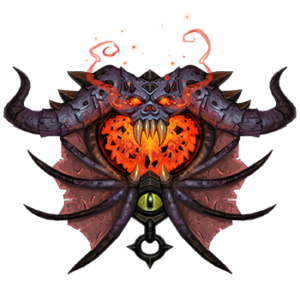
- Powerful Early Game – Warlocks have access to some of the most powerful early game minions in Hearthstone. While some builds decide to ignore the early game in order to Life Tap for the first few turns and start with a powerful mid game (Twilight Drake, Mountain Giant), it’s generally really easy for the Warlock to dominate the first turns if the deck is built to support that. The Discard theme also allows the Warlock to swing the early game tempo heavily with combos like Malchezaar's Imp + Soulfire or any card discarding a Silverware Golem.
- Strong AoE Clears – Warlock is known for their ability to control wide boards really well with their AoE cards. Hellfire and Abyssal Enforcer are good at dealing with low to medium health boards, Felfire Potion can clear anything up to 5 health, while Twisting Nether is a full board wipe no matter how big the minions are. Shadowflame is a flexible AoE tool – it can be played on a smaller minion to deal two or three damage, or it can be played on a huge 8/8 to deal a massive eight AoE damage. On top of that, a well-timed Defile can clear a big board for just 2 mana.
- Access to Unlimited Card Draw – Well, maybe not exactly “unlimited” because it’s limited by the health, but the truth is that card draw is not as important in matchups where the health is a problem. No matter what Warlock deck you play, it’s more or less built around the Hero Power. Faster decks for Warlocks don’t need to play card draw because once they run out of steam, they still draw two cards per turn instead of one. And in slower decks, you don’t need to play any extra sources of card draw because you can Life Tap almost as much as you want.
Weaknesses:
- Health Issues – For Warlock, health is an incredibly important resource. It can be translated into value (Life Tap) or into tempo (Flame Imp, AoE spells that damage Warlock, Bloodbloom). At the same time, Warlock doesn’t have access to enough strong, healing cards. The situation has changed a bit with Kobolds & Catacombs after Dark Pact and Lesser Amethyst Spellstone were introduced, but Warlock often still struggles with healing issues until he transforms into Bloodreaver Gul'dan. So in the end, the class relies on the neutral health refill options. For example, while Antique Healbot was in Standard, it was an auto-include into any slow Warlock deck. Before Reno Jackson rotated out, a Highlander deck was also one of the most common Warlock themes, simply because the healing from Reno was always useful in the Warlock class. However, with no powerful class healing and no good healing cards in Standard, the class often struggles, especially against the aggressive decks, where the health total is even more important.
- Discard Theme’s Randomness – Discard is probably the most powerful Warlock theme in Standard after Reno has rotated out. However, it suffers from an issue that can’t really be dealt with. Discarding is inherently a very random mechanic since you get rid of a random card in your hand. Imagine a situation where you have 2x Soulfire and Silverware Golem in your hand, while you sit at two or three points of mana. The outcome of a simple 50/50 can easily decide the outcome of a match. If you discard Silverware Golem, you can deal 8 damage and you get a 3/3 in play. And if you discard a Soulfire, you deal 4 damage and have no minion in play. The difference is tremendous. Similarly, the decks are very draw-dependent – you can easily draw a hand full of discard cards you want to get rid of without any way to discard them.
- Zoo’s Board Dependence – Zoo Warlock decks are incredibly dependent on the board. Cards like Abusive Sergeant, Dire Wolf Alpha or Crystalweaver are common in Zoo and running a lot of them is a double-edged sword. On the one hand, if you happen to have board, they allow you to constantly trade up and keep it. But if you happen to lose board control, those cards are nearly useless and they can hold you back – you’d rather have something more proactive in your hand. With limited ways to refill, Zoo is countered by board clears or by decks that can take the board control in the early game and not let the Warlock develop.
Meta Decks and Strategies
Here are the Warlock decks you can use on the ladder in the current meta. While not every deck listed here is high tier, they all should be viable options, especially to climb through the lower ranks.
Zoo has been one of the oldest established archetypes in Hearthstone. The core strategy behind it never really changed, and it doesn’t change with the new expansion. The strength of Zoolock lies in flooding the deck with cheap and high-value minions, combined with clever mana usage and aggressive use of Life Tap, the Warlock’s Hero Power.
During Knights of the Frozen Throne, Zoo Warlock has jumped onto the Prince Keleseth bandwagon. Given that the deck didn’t really have strong 2 mana cards, it could quite easily opt to not run any of them whatsoever and instead hope to get an early Keleseth in order to improve the deck’s power (and it did indeed improve a lot – not only it did make the deck’s mid game much better, but your late game turns were much more relevant).
However, Kobolds & Catacombs have introduced a very powerful 2-drop – Vulgar Homunculus – which made Zoo players re-think the Keleseth strategy. Right now, it appears that both strategies are viable, with people mostly leaning towards the non-Keleseth version. Deck featuring Prince can possibly be better, but it’s also less consistent. If you get it on Turn 2, it will always outperform the non-Keleseth version, but if you don’t, it can fall behind a bit.
Saying that Warlock has been the burnt child of Knights of the Frozen Throne would be an understatement. The class that always had a decent standing throughout the earlier expansions of Hearthstone took a huge hit. The not so recent introduction of the Jade mechanic is only one reason; the uprising of control killers like Big Priest or Exodia Mage kept the former king of control archetypes in check.
But just after two weeks of the new expansion “Kobolds and Catacombs”, we can already see the end of that period of drought for Warlock. The class received numerous unique minions and spells that enable both aggressive and control archetypes to reign surpreme again.
The archetype of Cube Warlock looks particularly unique, and after a first few impressions during high-competitive play at various tournaments, this list that revolves around the new minion Carnivorous Cube looks to take a spot in the highest echelons of tier lists.
As already said, this deck surely plays out in a very unique way. The complexity of the list’s win conditions is only surpassed by the number of possible plays in the later stages of the game.
The general theme of the deck however looks pretty simple: It tries to control the board while establishing terrifying combinations of minions to either kill you within a couple of turns or to block minion damage for multiple eternities.
Budget and Basic Decks
If you’re a new player without a big collection, you might be looking for a way to play Warlock without spending a lot of your Dust on the Legendaries.
A Basic deck is a deck with only the starter cards. Every player can make it after unlocking the class and leveling it up to 10 (which unlocks every Basic card). It’s a best solution if you have just started playing the game – you can test each class without investing into it.
A Budget deck is a cheap deck with no Epics, Legendaries or Adventure cards. Budget decks only run the basic cards + Commons and Rares, which makes them relatively cheap and accessible even for players who have recently started. Average budget deck will cost up to 2,000 Dust to craft, but the number goes down heavily when you own some of the cards already. Even with a relatively small collection, you should be able to build one with just a few hundreds of Dust.
Basic decks are mostly meant for the Casual mode and up to Rank 20 in Ranked. Budget decks can easily be played up to Rank 10 in Ranked, while some of the better ones can even get you up to Rank 5.
This deck is a Basic Midrange Warlock. Sadly for the new players that want to pick up the class, Warlock basic cards are all over the place. We get the base of few different strategies, but none of them is developed more and to make a really working Warlock deck, a lot of non-Basic cards are necessary.
The deck mostly relies on the Neutral minions core, supported by the Basic Warlock removals. While not the best, we have a different single target (Mortal Coil, Shadow Bolt) and AoE (Hellfire, Dread Infernal) removals. Dread Infernal is probably the strongest card, as it has pretty solid base stats, and the AoE effect can be deadly if used correctly.
One of the main reason to run Warlock over other classes is the Hero Power. The class can refill its hand much easier than the other classes, but at the cost of health. Warlock’s Hero Power might be the most difficult one to use for the new players, so if you’re just starting your adventure with Hearthstone, I’d recommend picking a different deck instead.
Zoo Warlock is a very old Warlock archetype. It was first popularized by Reynad back in the Classic Hearthstone, then it was going in and out of the meta multiple times. About a year ago, after One Night in Karazhan adventure, Zoo has raised again with a new version full of discard synergies. However, it as quickly fallen out of favor again, and we haven’t seen almost any Zoo Warlocks ever since then.
Introduction of Prince Keleseth made it powerful again in the Knights of the Frozen Throne. However, given that Keleseth is a Legendary, that option wasn’t possible for many of the budget players. Luckily for them, things have changed in Kobolds & Catacombs. Now the non-Keleseth version of Zoo is pretty much as viable as the Prince version, making it easier to build the deck on budget.
While it’s not the best deck ever and it would still require some Epics, Legendaries and adventure cards to be optimized, it’s actually not half bad. It might be one of the best budget decks available right now, with Rank 5 being easily attainable, while the more patient players might even hit Legend (especially after some upgrades).
Level-up Rewards
Every 2 levels, up to level 10, you will get two copies of a Basic class card. A lot of those cards are staples, so it’s heavily advised to highly prioritize getting every class to level 10.
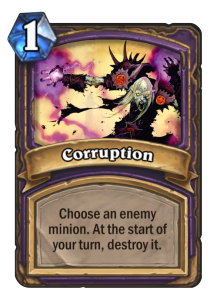 |
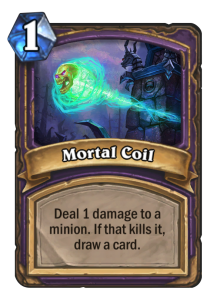 |
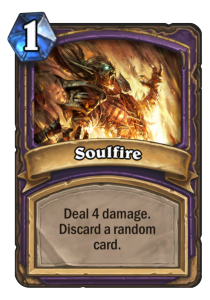 |
| Level 2 | Level 4 | Level 6 |
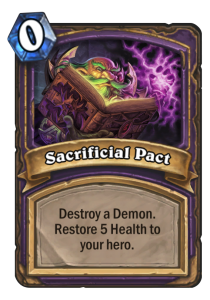 |
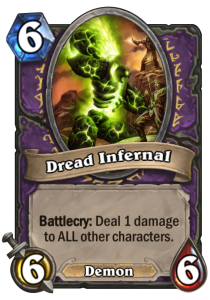 |
| Level 8 | Level 10 |
Every few levels past level 10, you will be rewarded with a Golden version of one of the Basic cards. Leveling up past 10 doesn’t give you any competitive edge – all the rewards are cosmetic.




















































